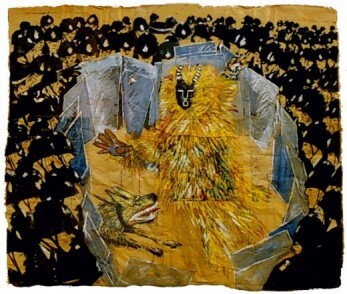The first time I saw Beach Day perform was from the periphery of a sweaty mosh pit at Gramps Bar in Wynwood, where the band opened up for pop-punk icons the Thermals. Skate videos showing epic, painful wipeouts ran continuously on loop, projected against the side of an adjacent building. A haze of pink lighting enveloped the trio, tempered only by a few Christmas lights slung sparsely and haphazardly inside the small performance tent. When slender lead singer Kimmy Drake introduced herself as “just a Kendall girl,” referring to the blasé Miami suburb known mostly for its Barnes & Noble, audience members stirred restlessly. But then she froze the crowd with vocals that would’ve made Jack White, Kim Deal, and Phil Spector each nod their heads in tacit, rhythmic, hypothetical approval.
Caribbean: Crossroads of the World, offering a 200-year survey of visual culture from the Caribbean Basin, results from more than a decade of devoted work by curator Elvis Fuentes. Taking as its point of departure the Haitian Revolution (1791-1804)— a pivotal moment that changed the Caribbean’s dynamics with Europe—in the history of the area, the exhibition rejects the reductionist and extended chronological vision of a place where the coexistence, persistence, and overlap of different historic eras is one of the most outstanding endogenous characteristic.


